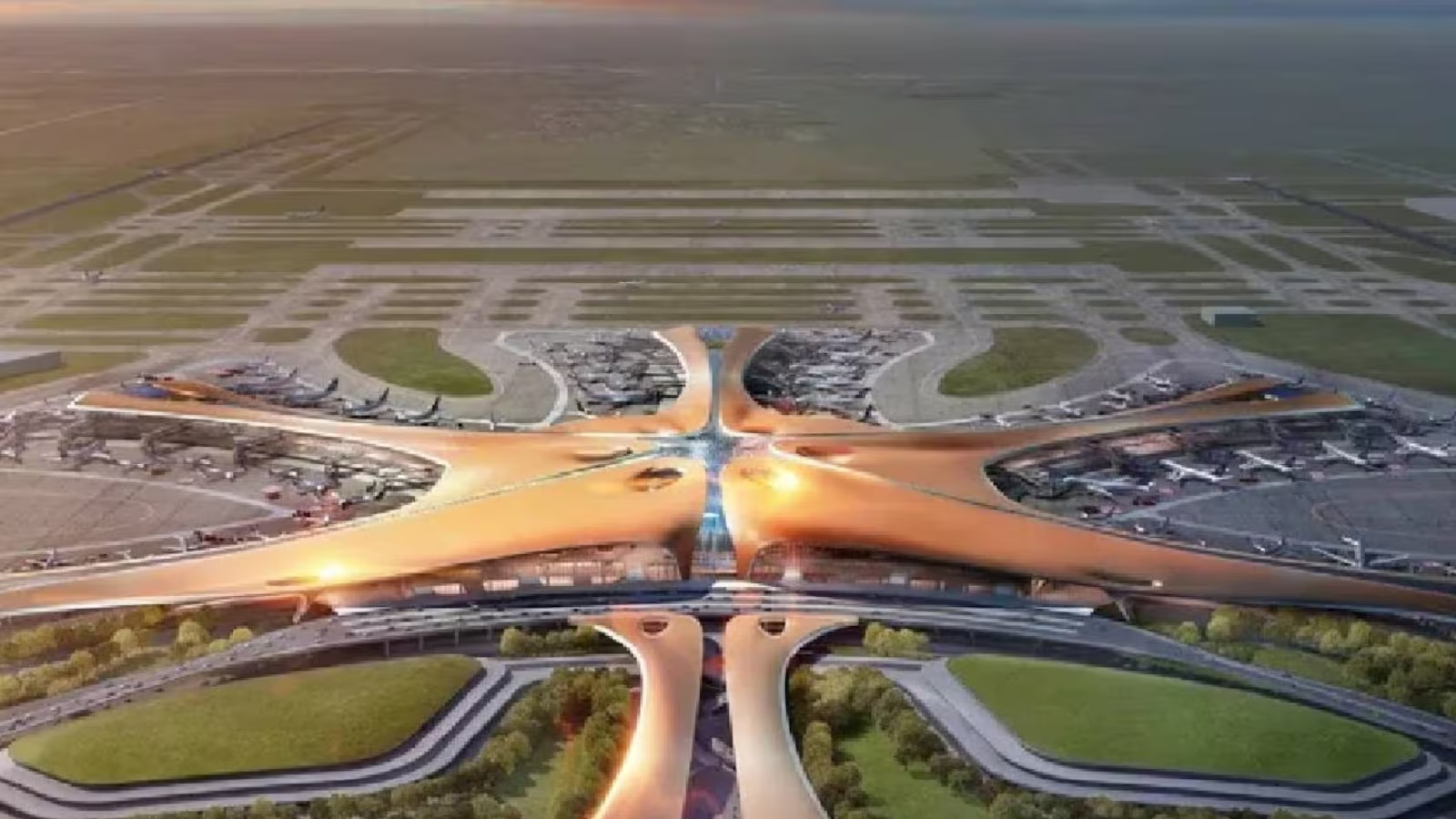Maharashtra’s Deputy Chief Minister Devendra Fadnavis has announced a significant milestone in the state’s infrastructure landscape: the Navi Mumbai International Airport (NMIA) is now 94% complete and is firmly on track for a formal launch by September 30, 2025. This ambitious project aims to establish one of the nation’s most advanced aviation hubs, promising to redefine regional connectivity and serve as a powerful engine for economic growth within the Mumbai Metropolitan Region (MMR).
During a recent official site visit, Fadnavis emphasised that NMIA is poised to become India’s most modern aviation facility, incorporating cutting-edge technology, including what is touted as the world’s fastest baggage handling system. Designed strategically to alleviate the burgeoning pressure on the existing Chhatrapati Shivaji Maharaj International Airport in Mumbai, the Navi Mumbai facility is projected to handle an impressive 60 million passengers annually once it achieves full operational capacity. The terminal building, runway infrastructure, air traffic control (ATC) tower, and cargo handling zones are all reported to be in their final stages of readiness, signalling imminent operational trials.
The economic ramifications of NMIA’s commissioning are expected to be profound. Officials anticipate that the airport will not only enhance regional connectivity but also serve as a pivotal driver for comprehensive economic growth across the MMR. This includes a substantial boost to international trade and tourism, alongside the generation of thousands of direct and indirect employment opportunities, fostering a more equitable distribution of prosperity. The airport’s strategic integration with key road and metro networks, notably the Mumbai Trans Harbour Link (MTHL) and the Navi Mumbai Metro, ensures seamless access for commuters and cargo alike, streamlining urban mobility.
The construction of NMIA, which commenced in 2018, has navigated a complex path marked by initial delays stemming from land acquisition challenges, global pandemic disruptions, and the intricate process of securing environmental clearances. However, Fadnavis affirmed that all major hurdles have now been successfully addressed, paving the way for trial runs to commence as early as August 2025. This resilience in overcoming obstacles underscores the state’s commitment to delivering critical infrastructure projects that underpin its developmental aspirations.
Beyond its immediate function as a transportation hub, the Navi Mumbai International Airport is envisioned as a symbol of Maharashtra’s rising stature in global infrastructure development. Its design incorporates elements of sustainability, with plans for green power usage and a commitment to electric or alternative fuel vehicles within the airport vicinity, aligning with the broader vision for zero net carbon and eco-friendly urban spaces. This forward-looking approach positions NMIA not merely as an airport, but as a foundational element for a smarter, more connected, and sustainably developed Mumbai Metropolitan Region.
Maharashtra’s Deputy Chief Minister Devendra Fadnavis has announced a significant milestone in the state’s infrastructure landscape: the Navi Mumbai International Airport (NMIA) is now 94% complete and is firmly on track for a formal launch by September 30, 2025. This ambitious project aims to establish one of the nation’s most advanced aviation hubs, promising to redefine regional connectivity and serve as a powerful engine for economic growth within the Mumbai Metropolitan Region (MMR).
During a recent official site visit, Fadnavis emphasised that NMIA is poised to become India’s most modern aviation facility, incorporating cutting-edge technology, including what is touted as the world’s fastest baggage handling system. Designed strategically to alleviate the burgeoning pressure on the existing Chhatrapati Shivaji Maharaj International Airport in Mumbai, the Navi Mumbai facility is projected to handle an impressive 60 million passengers annually once it achieves full operational capacity. The terminal building, runway infrastructure, air traffic control (ATC) tower, and cargo handling zones are all reported to be in their final stages of readiness, signalling imminent operational trials.
The economic ramifications of NMIA’s commissioning are expected to be profound. Officials anticipate that the airport will not only enhance regional connectivity but also serve as a pivotal driver for comprehensive economic growth across the MMR. This includes a substantial boost to international trade and tourism, alongside the generation of thousands of direct and indirect employment opportunities, fostering a more equitable distribution of prosperity. The airport’s strategic integration with key road and metro networks, notably the Mumbai Trans Harbour Link (MTHL) and the Navi Mumbai Metro, ensures seamless access for commuters and cargo alike, streamlining urban mobility.
The construction of NMIA, which commenced in 2018, has navigated a complex path marked by initial delays stemming from land acquisition challenges, global pandemic disruptions, and the intricate process of securing environmental clearances. However, Fadnavis affirmed that all major hurdles have now been successfully addressed, paving the way for trial runs to commence as early as August 2025. This resilience in overcoming obstacles underscores the state’s commitment to delivering critical infrastructure projects that underpin its developmental aspirations.
Beyond its immediate function as a transportation hub, the Navi Mumbai International Airport is envisioned as a symbol of Maharashtra’s rising stature in global infrastructure development. Its design incorporates elements of sustainability, with plans for green power usage and a commitment to electric or alternative fuel vehicles within the airport vicinity, aligning with the broader vision for zero net carbon and eco-friendly urban spaces. This forward-looking approach positions NMIA not merely as an airport, but as a foundational element for a smarter, more connected, and sustainably developed Mumbai Metropolitan Region.
Also Read: Delhi Double-Decker Flyover Delayed Due To Pending Tree-Felling Permission Approval




